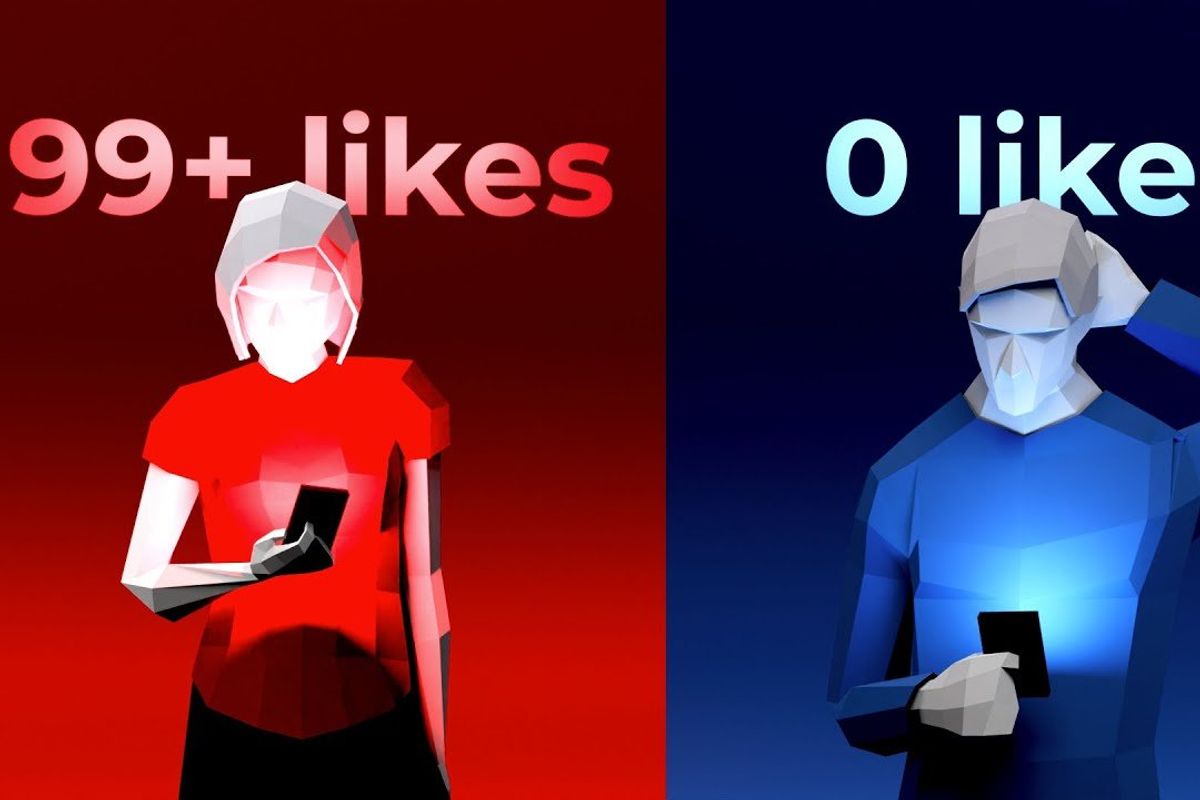Video explains why it's so hard for the average guy to find love on dating apps
Men, the odds are not in your favor.

The difference between men and women on dating apps is significant.
Dating apps are challenging for the average guy because they can be a big blow to their self-esteem. They can contribute to feelings of anxiety and depression because of the heightened competition on the apps and the pressure to present a perfect image.
A study out of the University of North Texas found that male Tinder users reported lower levels of satisfaction with their faces and bodies and lower levels of self-worth than those who aren't on the dating app.
A big reason is that it’s a lot harder for straight men to find matches on dating apps than straight women. An eye-opening video created by Memeable Data clearly shows why dating apps can be so frustrating for the average guy.
In the video, the narrator explains there are three significant reasons dating apps are so challenging for most men. Although he doesn’t have all the data necessary to make precise claims, the numbers are aligned with those reported by Hinge.
Reason 1: There are more male than female users. On most sites, men outnumber women 2-to-1.
Reason 2: Men give more likes than women. Men are nearly three times as likely to swipe a profile "like" (46%) than women (14%).
Reason 3: A small share of the users get a big percentage of the likes. About half the likes from men are given to about 25% of the women, and half the likes from women are given to only 15% of the men.
This means that out of 100 swipes per user, the average man only gets one like and zero matches.
- Comedian gives a masterclass in delivering compliments to strangers ›
- Man has the best response to a woman saying she is a 'bigger girl' ›
- Hilarious social media challenge has women ditching dating apps to find love at Home Depot ›
- People share what they've learned about the opposite sex - Upworthy ›
- How the bird test screens potential romantic parterns - Upworthy ›
- What is the 'shoe theory' on TikTok - Upworthy ›
- Google Maps, Apple Maps, or Waze— former Uber driver shares which navigation app is best - Upworthy ›

